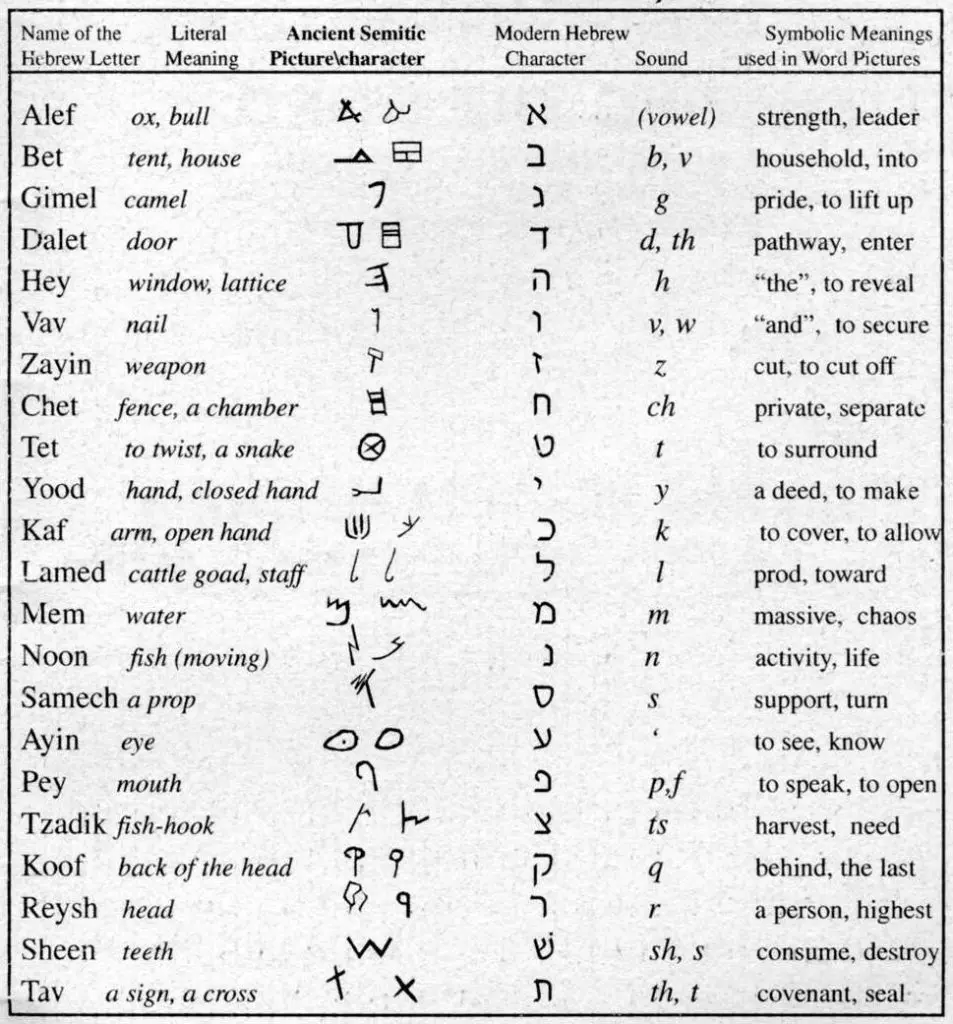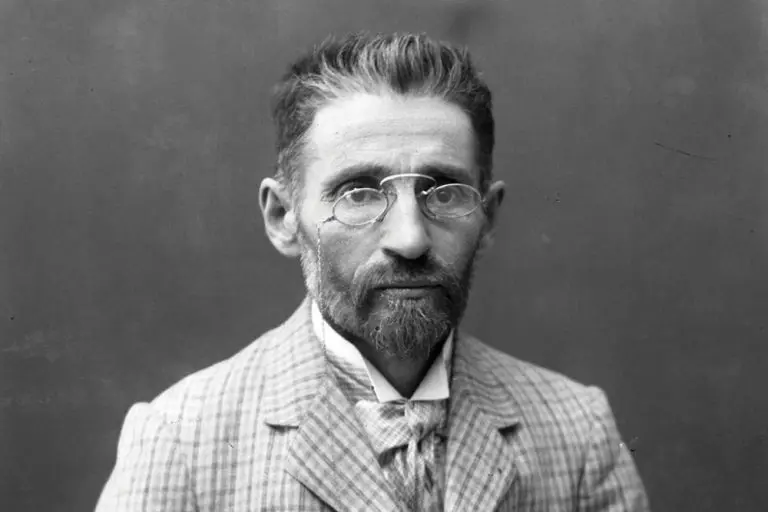The Hebrew language is the only language founded at the same time handwriting was, and yet, it still is widely spoken in the 21st century. The oldest evidence for pre-Hebrew letters was found in a region called ”Mesopotamia,” currently an area spreading through Iran and Iraq.
Findings tell the Hebrew alphabet was evolved from the Sumerian script, 3,500 BC approximately. In Sumerian script – if you wanted to write something, all you needed to do is draw that thing you want to write down. (Also read: Oldest languages in the world)
Hebrew Language’s Four Stages
Hebrew is a Semitic language written in the Semitic script from right to left and has 22 letters. It is considered to have four periods:
- Biblical or Classical Hebrew until around 3rd century B.C., when most of the Old Testament was written
- Mishanite Hebrew, the language of Mishna consisting of literature of Jewish traditions written about A.D.200 This form of Hebrew was never a spoken language among people.
- Medieval Hebrew from about the 6th century A.D. to 13th century A.D.
- Modern Hebrew, the language of Israel in modern times.

Check out I Love You In German Language.
Hebrew Literature
Hebrew literature has had a continuous tradition from the 12th century B.C. to the present. The earliest Hebrew literature is the Old Testament which consists of a collection of historical, legal, ethical, and liturgical works composed over a period of many centuries.
The Hebrew language works were studied and taught in synagogues and schools. They were not written down but preserved and transmitted orally. About 220 A.D., the main laws were compiled by Judah ha-Nasi and committed to writing in the Mishna.
The expansion of Mishna by successive generations of scholars by way of commentaries was known as Gemara.
The Mishna and Gemara together constituted the Talmud. Another important work of the same period is Midrash, which consists of a series of contributions made over many years giving the legendary and imaginative interpretations of the Bible.
Judeo Hellenic Period
Hebrew ceased to be the language of the people but was used only by scholars and the clergy during the Judeo Hellenic period. After the Talmudic era, it lapsed even as a literary language and was revived in Palestine and Spain from the 7th century. Hebrew literature flourished in Spain.
A monumental contribution of the Judea-Arabic school was Mishne Torah which is the formulation of the code of Rabbinic Law by the Spanish-born Moses Maimonides.
Early Revival of the Hebrew Language
Moshe Hayyim Luzzarato, the poet and playwright of Italy, heralded a new era in Hebrew literature. Among the great names in Hebrew literature is Moses Mendelssohn in Germany, who translated the Old Testament into German in Hebrew characters.
Another important development is the Jewish enlightenment, Haskala, which was popular in Russia and Poland. It produced rich literature in Hebrew which was not the spoken language of the people. Some of the noteworthy names are the novelist Abraham Mapu and the poet Judah Leib Gordon and the essayist Abad Ha’am among other novelists, poets, and essayists.
Modern Hebrew Language
Hebrew was not a spoken language until a century back. Ashkenazi (Jews who lived in Europe) Jewish communities generally spoke Yiddish (a combination of Hebrew and German), while Sephardic Jews spoke Ladino (a combination of Hebrew and Spanish). Jewish communities spread across the world also spoke the native language of the countries they were living in.
Thanks to the personal mission of Eliezer Ben-Yehuda, who revived Hebrew as a spoken language. He believed it was important for the Jewish people to have their own language if they were to have their own land.

In order to have our own land and political life… we must have the Hebrew language in which we can conduct the business of life.
by Ben-Yehuda in 1880.
When his family moved to Palestine, they decided that only Hebrew language would be spoken in their home – no small task, since Hebrew was an ancient language that lacked words for modern things like “coffee” or “newspaper“. So Ben-Yehuda set about creating hundreds of new words using the roots of biblical Hebrew words as a starting point.
Eventually, he published a modern Hebrew dictionary and is often referred to as the father of Modern Hebrew. Today Hebrew is the official spoken language of the State of Israel and a common language for Jews living outside of Israel. Normally Jewish children will attend Hebrew School until they are old enough to have their Bar Mitzvah or Bat Mitzvah.
Hebrew Speaking Countries
With the rise of Zionism in the 19th century, it was revived as a spoken and literary language, becoming the main language of the Yishuv and subsequently of the State of Israel. According to Ethnologue, in 1998, Hebrew was the language of five million people worldwide.
After Israel, the United States has the second largest Hebrew-speaking population, with about 220,000 fluent speakers, mostly from Israel. (Read also: Languages spoken in USA)
It is still spoken in few parts of Europe. Though the official stats is not available, it is still one of the minority languages in many European states. For example, check out the minority languages of Poland.
6 Benefits of Learning Hebrew
Regardless of the fact that learning a new language increases cognitive thinking and improves or brain function, there are a few more reasons for learning Hebrew language.
- The number of Hebrew speakers is estimated at 10,000,000. Most of them are Jewish people from Israel; a big part of them are Jewish and non-Jewish people from the United States, and the rest are scattered around the world.
- Many “partially” Jewish people find it out only when they are adults; it has a lot to do with the fact that Jewish people were and still are living all over the world.
- The holy bible, which is holy and regarding Judaism, Islam, and Christianity, was originally written in Ancient Hebrew, but knowing Hebrew would be enough for you to way better understand it.
- The Museum of Israel in Jerusalem presents ancient Jewish tombs and graves in Hebrew. Jesus’ terms, dedications, and blessings are calligraphed in midterm Hebrew, but every good Hebrew speaker would understand what’s written.
- Jesus was a Hebrew speaker, and so was everyone close to him; imagine what a nice gesture it’d be for them to know you’ve learned their native language, which was highly valued by them (and if you truly believe in Jesus, you know he still does notice everything you do).
- The number of Hebrew speakers is relatively low compared to Chinese or English speakers, but there are Israeli firms and Israeli business people worldwide. If your job involves international interaction, you’d most likely meet or talk with Israeli people or people who work for an Israeli company; that might give you some extra credit.
Moreover, it makes it even more exclusive to know that you are one among a very small group of people who speak the holy and the longest surviving language.
Read also Oldest Languages Of India.
